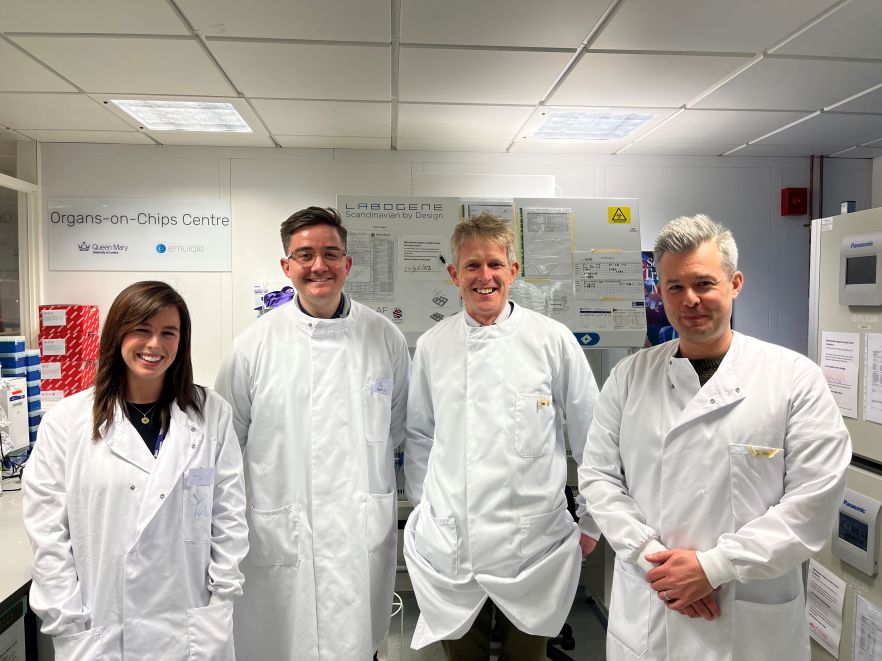Centre for Bioengineering
Production of a human growth plate organ-chip model of skeletal development
| Principal investigator: | Martin KNIGHT |
| Co-investigator(s): | Timothy HOPKINS and |
| Funding source(s): | National Centre for the Replacement, Refinement and Reduction of Animals in Research (NC3Rs) and BBSRC |
| Start: 01-02-2023 / End: 31-01-2024 | |
| Amount: £201240 | |
| Directly incurred staff: | Tim Hopkins |
| Research Centre: |

The growth plate is an area of tissue at the ends of bones in children which determines the development of the skeleton. It represents a transition between bone and cartilage and is supported by blood vessels. Due to the importance of the growth plate, there is considerable interest in studying this organ and its role in development, ageing, and disease. To do so necessitates robust, reproducible and physiologically relevant experimental ‘model’ systems. Currently many studies rely on animals, typically mice and rats. Since mechanical forces are known to influence skeletal development in the body, some of the animal models include techniques to control mechanical forces on the growth plate whilst the animal is still alive. These widely used animal models often have limited reproducibility and fail to represent key behaviour in humans as well as prompting ethical concerns. There is therefore an urgent need to replace some of these animal models with non-animal, human experimental models. This would improve scientific rigour and relevance to human physiology as well as reducing the use of animals in science.
Previously reported non-animal models of the growth plate fail to replicate the key features of the organ including a gradient of bone-cartilage tissue, mechanical loading and incorporation of blood vessels linking to the bone. Therefore, we will develop and validate a new human growth plate model using organ-on-a-chip technology. An organ-chip is an experimental model system in which human cells can be grown within interconnected channels through which fluid can be pumped providing the cells with the necessary nutrients to keep them alive.
We will develop a growth plate organ-chip with the following key features:
- A composite tissue graded from bone to cartilage
- A channel replicating the blood vessels
- Mechanical loading of the developing bone-cartilage growth plate
- A reproducible, scalable system that can easily be adopted by other researchers
To achieve the above, we will use human adult stem cells expanded from bone marrow. These stem cells will be grown within a 3D gel material in one of the channels in an organ-chip. The cells will then be differentiated into bone and cartilage cells using natural growth factors to create the graded bone-cartilage growth plate tissue. We will also create a blood vessel channel lined with human endothelial cells that form blood vessel walls. This blood vessel channel will provide a conduit for nutrient and hormone delivery to the developing growth plate as occurs in the body. To ensure reproducibility and scalability, the organ-chip model will be created with commercially available human stem cell and endothelial cells and within the commercially available organ-chip provided by Emulate Inc. This chip consists of two channels separated by a semi-permeable membrane allowing interaction between the developing bone-cartilage growth plate tissue in one channel and the blood vessel channel. In addition, we will utilise the ability of the Emulate organ-chip to provide controlled mechanical loading to the channels replicating the mechanical environment within the body. In this way, our vision is to create a highly reproducible and validated human vascularised growth plate organ-chip model which can be readily adopted by the scientific community reducing reliance on animal models and improving the quality of research into skeletal development in health and disease.

